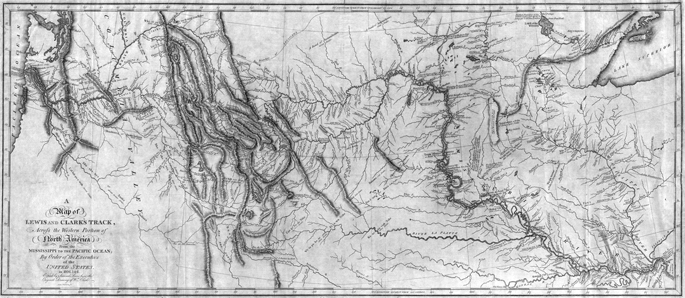
- St. Louis, United States, May 1804. The expedition, led by Captain Meriwether Lewis and Lt. William Clark, departed to travel west of the United States and reach the Pacific coast.

The expedition was commissioned by President Thomas Jefferson, shortly after the purchase of Louisiana in 1803. The main objective was to explore, map and begin colonizing the newly acquired territory. They also had several secondary objectives: to study flora and fauna, to find mineral deposits, and to establish commercial relationships with local tribes.
Because they didn't know what this adventure was going to last and what they were going to find along the way, the expedition members were trained hard. Expedition heads Lewis and Clarki, Andrew Ellicott taught them how to use the sextant, and Benjamin Rush taught them a quick course of basic remedies. Rush was a close friend of Jefferson and one of the signatories to the 1776 Declaration of Independence. He was a well-known physician of the time, despite being a passionate advocate of the theory of four humors or fluids (black bile, bile, mucus, and blood). Rush considers that the state of health is conditioned by the balance of these four fluids and that the deficiency or excess of one is at the origin of all diseases. Among its best known remedies were broths and purges through the palliative intestines. According to Rush, excess bile caused constipation, headache, and tiredness, and the pill was invented to cure it. 50% of the pills were made up of mercury chloride, and thanks to the powerful pusher, it was possible to expel excessive bile and restore balance. He gave Lewis a generous load of pills before he left.
On the expedition, hunting was the main and almost unique food. The first symptoms of fatigue and constipation began to appear right away, and Lewis began to separate the pills to right and left. In addition, since sexual relations with indigenous people were common and mercury was the only known remedy against syphilis, the expeditionaries had no objection to taking pills. The body does not adequately assimilate mercury chloride and is excreted in conjunction with the faeces. That's why the expedition left a footprint that won't go away for a long time: that of mercury. And archaeologists have been able to accurately identify the path of expedition.